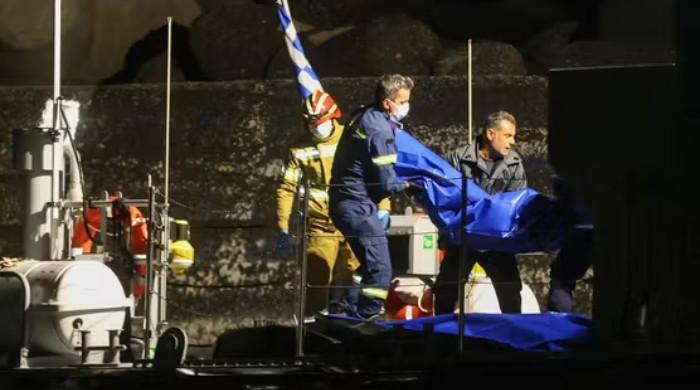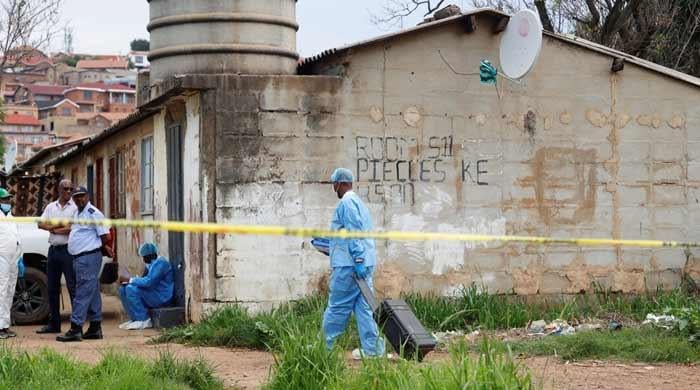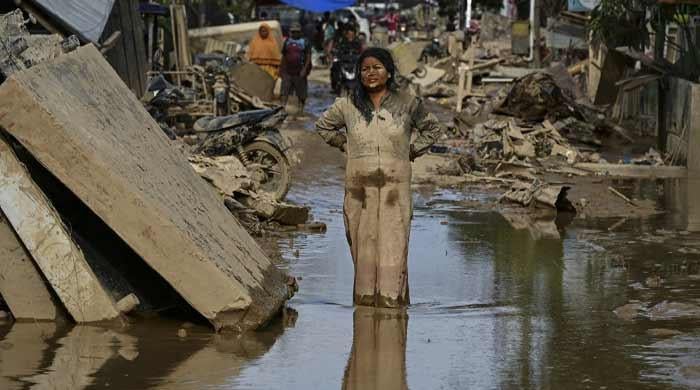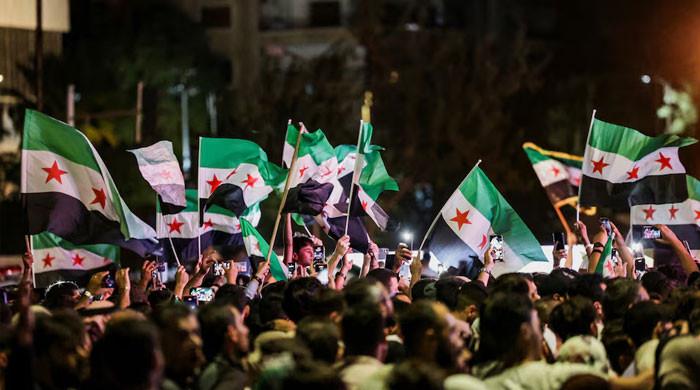Unexploded bombs sow fear among Gazans under fragile truce
No demining equipment has been authorised to enter the Gaza Strip by the Israeli army
November 01, 2025

Moein al-Hattu's home has been ripped apart, its cinder block walls blown out into the street and a dusty grey bomb hangs menacingly from a damaged pillar, its tip resting on a crushed chest of drawers.
Weighing more than a tonne, the munition was dropped during an airstrike on Gaza City during fighting between Israel and Hamas but has not exploded, yet.
"I'm living in terror and unable to remove it," al-Hattu told AFP, as children wandering through the rubble paused to marvel at the threatening intrusion.
The grey-bearded Palestinian wants to hang tarpaulins from the shell of his bombed-out home and move back in, but has been unable to find anyone in Gaza with the skills or equipment to remove the giant bomb.
"The relevant authorities, whether the civil defence or the municipality, say they can't remove it. Who can I go to and complain to?" he demanded.
"If it had exploded, it would have caused massive destruction and destroyed at least five to six houses."
After two years of war, the ruined cities of Gaza, a densely packed territory home to more than two million Palestinians, are littered with military debris, including unexploded, still-deadly munitions.
In the streets of Gaza City, children play with rocket parts and the tail fins of mortar shells, oblivious to or unbothered by the danger.
According to a study by charity Handicap International, Israel has dropped around 70,000 tonnes of explosives on targets in Gaza since October 7, 2023.
Cardboard for cooking
In January this year, the United Nations Mine Action Service (UNMAS) warned that between five and 10% of these bombs did not explode — leaving their deadly payloads to be recovered by the fighters or discovered by frightened residents.
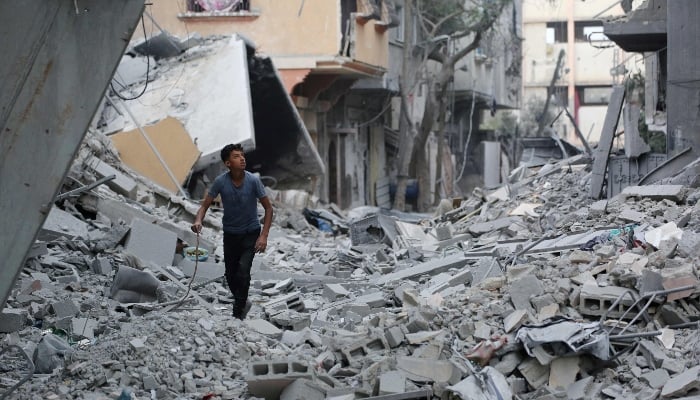
At Gaza City's Al-Shifa Hospital, Mohammed Nour sat beside a bed holding his two injured children.
The pair watched mute and glassy-eyed, their legs bound and skin flecked with shrapnel as he explained how they had been injured.
"We were setting up our tents and the boys went to look for wood, nylon and cardboard to burn to use for cooking," Nour told AFP.
"About ten metres away from us, we suddenly saw boys being thrown by the explosion. We didn't think they were our children and then we found them scattered in every corner."
Nour's sons may yet keep their limbs but in a nearby bed, six-year-old Yahya has lost part of his right hand and is all but covered in bandages. His grandfather Tawfiq al-Sharbasi sits by him, keeping vigil and strokes his hair.
"These are children. What did they do wrong? They were playing," he said.
Jonathan Crickx, spokesman for Unicef Palestine, told AFP it was very difficult to estimate how many children have been injured by unexploded ordnance.
"Following the recent ceasefire, we have recorded reports indicating that at least eight children were seriously injured by explosive remnants of war," he said, adding that UN agencies are trying to raise awareness of the threat.
To date, no demining equipment has been authorised to enter the Gaza Strip by the Israeli army.




